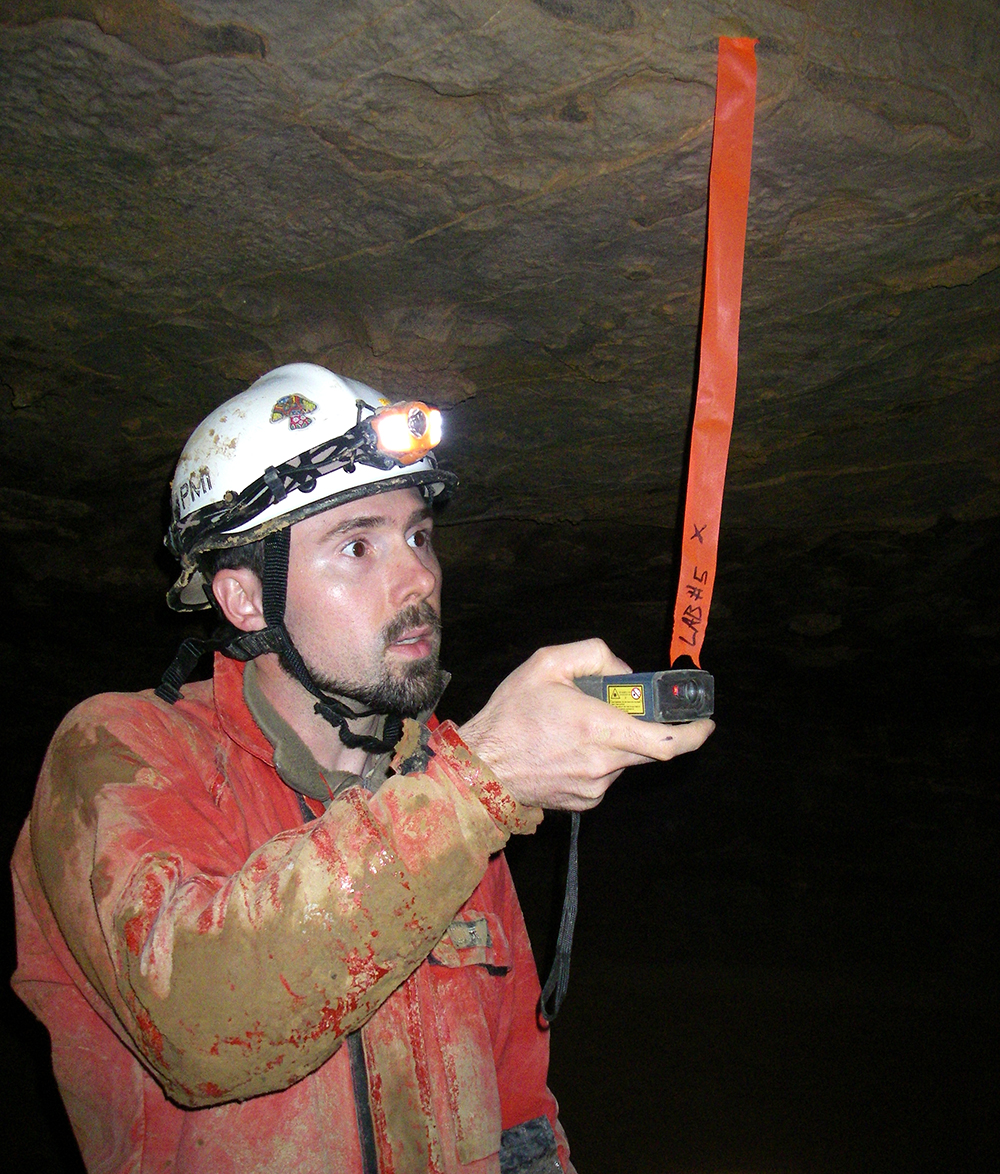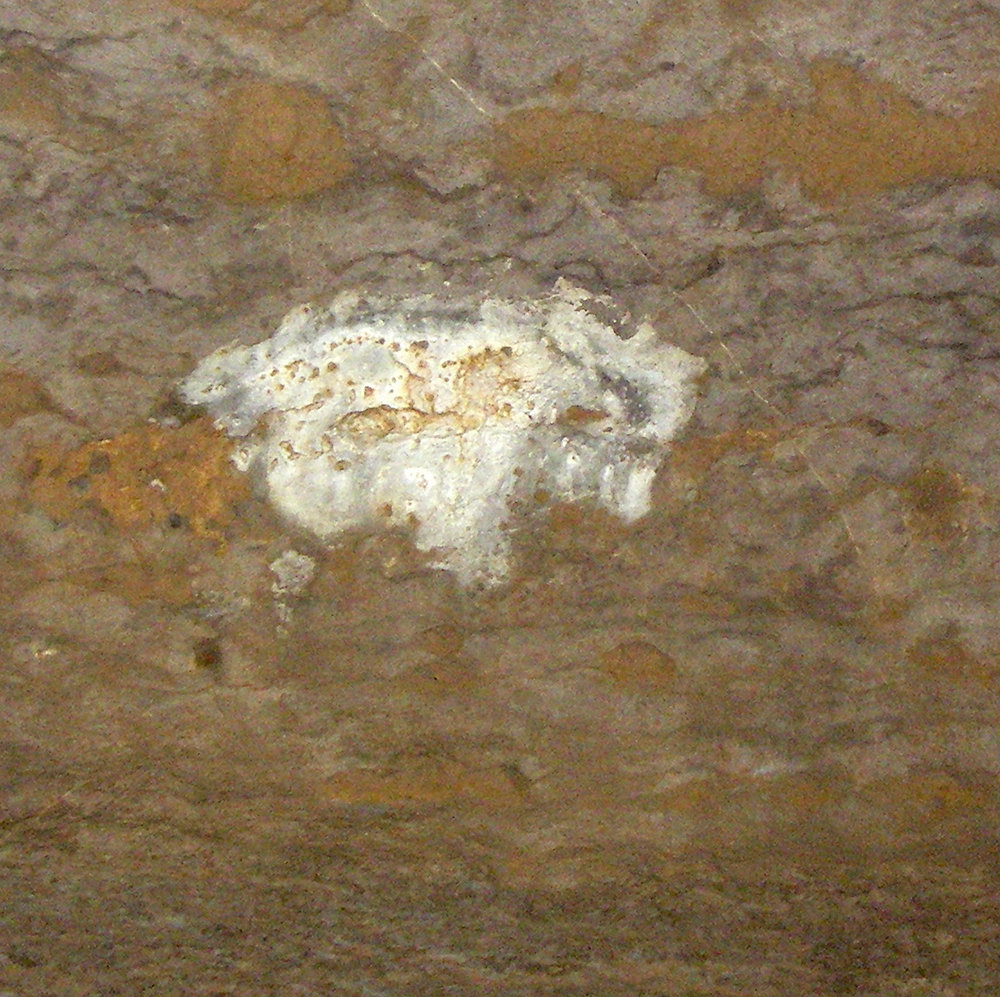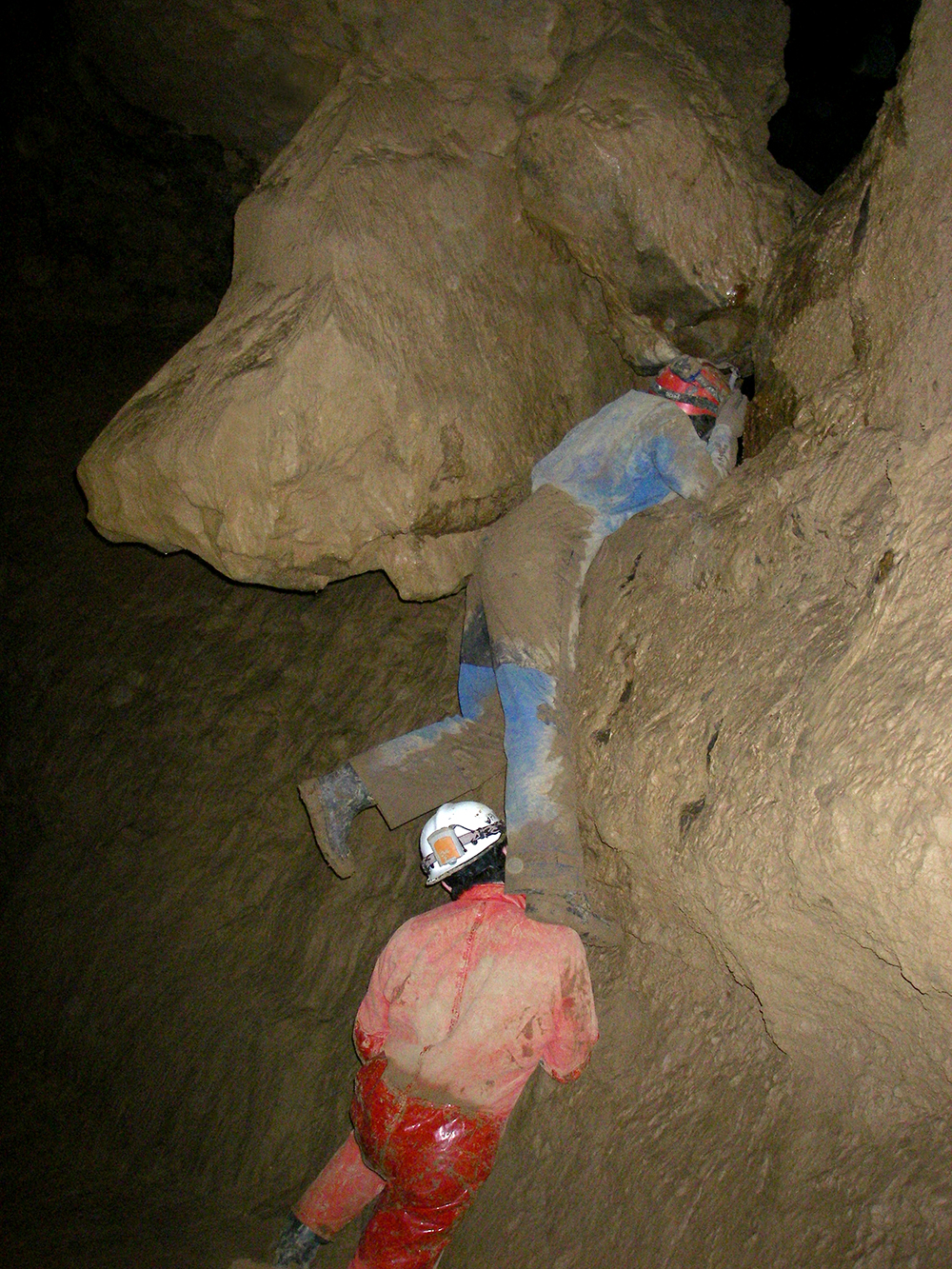
Chris takes a shot during our breakout in MDC . . . notice how much air is blowing the station! With Abby Hohn, Chris and I we surveyed 27 stations and 1,140 feet of passage in an 15 hour trip.
Memorial Day Cave Trip Report
LAB and LAC survey
by Nikki Fox
Chris Coates and I arrived at the Gateway Saturday morning to join about 20 others for a hearty breakfast. There were a couple of other day crews for MCD there and it was nice to see faces that normally go on camp trips. Abby Hohn volunteered to join us and we were exited to have a three-person survey trip to our lead for the first time. It was also Abby’s first trip into MDC. And boy, was she in for a awesome trip!
We drove up to the farm and got dressed. Our team was the first underground at 10:30 a.m. The second team, which consisted of Pete, Aaron, Pete and Gayle caught up with us at the rigged climb downs before the 50-foot drop. As you could guess, there was a little backup in the Puppet Buster for the drop into Columbia Canyon. I must note here that Abby said several times during the trip “I love this cave,” even during the PB the first time.
When our team was down, we boogied onto our lead. Once we made it to our last station, LAA 11, I handed out the survey gear and got comfortable to start sketching with the LAB survey. Chris started to do some recon for the next station when he found an amazing discovery! There was a small slit in the rock above. Crawling a few feet further, it broke open big enough for a person to fit through! This was the kind of passage we have been hoping for since working on the lead since April . . . passage that could possibly connect with the other side of the mud-choked western end of Columbia Canyon.
When Chris climbed into the room above he hollered, “I see petroglyphs!” Come to find out there were not man-made works of art on the cave walls, but a white blob of calcite that looks like a bison on the wall. We referred to the breakout room as the “Bison Room” all day.
Once we made our shots into the room, we left our packs to check out the booming passage before us. After walking around for a while, we decided which passages to survey. We made one shot to the left passage, which was trending northwest, and then headed north on the right-hand passage from the Bison Room.
We got to the first intersection (at station LAB 5) in one 83-foot shot from the Bison Room. Here there were four ways to go: a small crack in the floor that connected with the left-hand passage from the Bison Room (it was not tied into the survey, but Abby tried to get through the crack), a high lead to the northwest only accessible by a bolt climb, an interesting keyhole-like small passage sloping downward continuing north and the obvious borehole continuance to the southeast.
We chose to survey down the smaller passage, being it was heading the direction we wanted to go — down. It went down and down until it choked out with mud at LAB 9. We think this site would be a good candidate for a dig in the future due to the strong air sucking into the crack. We left three leads in this area and continued to survey straight. The passage became smaller. So small, that in fact we had a tight crawl to access the next room. This room was highly decorated with soda straws and helictites.
Upon exploring this room more, we made the greatest discovery of the trip. There was a window in the north wall about 7 feet from the floor (near LAB 13). We had to help each other up the wall to see into the blackness . . . it was the connection to the other side of Columbia Canyon! When in the window, you were looking down into the typical CC passage: narrow and deep (at least 80 feet to the floor). After discussing this find for the past couple of days, Chris and I have settled on the name of Nebraska Canyon for several reasons, but mainly for honoring my home state known for its infinite flatness.
We surveyed the rest of the passage and then headed back to the first intersection room to continue following the main passage trending southeast. From here we chose to change our station designations from LAB to LAC. The passage was about 15-20 feet wide and averaged about 15 feet tall. After a several shots we came up a beautiful formation between LAC 3 and 4. A three-foot tall stalagmite towered in the middle of a turn, frozen in time, all alone. A little over 100 feet more of surveyed passage and we came to a huge flowstone column that was blocking most of the passage. This feature was very unlike the rest of the passage and easily the largest speleothem we encountered.
Around the next bend in the borehole were more helictites and a little pool of water coated in thin calcite sheets floating on the water. The pool was extremely shallow, probably no more than an inch. From this point, the passage continued to become more decorated. Stalactites, helictites and flowstone became more common. Pretty soon the passage gave way (around station LAC 9) to a flowstone-covered floor at which the dirt underneath was washed away in places. The floor protested, cracked and moaned at our weight. There were some places that simply broke underneath our footsteps.
About 555 feet into the LAC survey down this lazily-meandering passage we found a large cluster of formations taking up the width of the passage. I stopped here to document it with my camera between data recordings. We ended the survey around 9 p.m. after the passage made an abrupt downward turn. We took one more shot down a slope that Chris was the only one of us to go down. He described it as “basically where the mud stops and clean rock with white formations start.”
“The area is wet and slippery, fragile and loose with rock. I think it is the start of a short well or dome. I could not get close enough to the edge to look over the bottom edge without a hand line to keep Nikki from getting too nervous that I may fall in. It doesn’t sound very deep and the passage seems to hang a 90 degree right turn before the drop off, but I could not tell for sure. There is also a consistent dripping noise coming from this area.”
Generally speaking, in all of the upper levels the floor was mud covered. There was very little breakdown in the passages. We did notice airflow in this upper section. At one station, the tape was gently waiving around in the air (LAB 5).
We took about 3.5 hours going out and did not run into anyone else along the way. Abby did not share the same enthusiasm and love for the PB when heading out as she did when trekking into the cave. We arrived back at the filed house to awaken Pete Penczer and share the discovered loot of our trip with everyone.
Chris and I will be unable to make the normal GVKS weekend in July due to our El Cap expedition. But we plan on returning as soon as possible to rig and drop into Nebraska Canyon and survey our left leads.
The numbers:
15 hour trip
27 stations
1,140 feet of survey
94.1 longest shot

The “bison” on the wall that Chris saw.

Here Chris gives Abby a lift to look into the massive canyon of darkness.